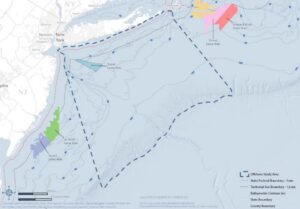Governor of New York Andrew M. Cuomo released the New York State Offshore Wind Master Plan, which will guide the development of 2.4 gigawatts of offshore wind by 2030, enough to power up to 1.2 million homes with clean energy and support the creation of thousands of jobs.
The state will issue solicitations in 2018 and in 2019 for a combined total of at least 800 megawatts of offshore wind power, he said in his 2018 State of the State address.
The Governor also announced a $15 million commitment to train the local workforce for good-paying jobs needed to build offshore wind and develop port infrastructure.
Richard L. Kauffman, Chairman of Energy and Finance for New York said: “New York has seized the moment to not only address the global climate crisis but also take advantage of the economic and environmental rewards that renewable energy can deliver. The Master Plan is a real demonstration of New York’s leadership on offshore wind, and will support the responsible and affordable development of a resource that will provide enormous benefits for all New Yorkers.”
On this context, the New York State Energy Research and Development Authority (NYSERDA) has filed an Offshore Wind Policy Options Paper with the New York State Public Service Commission, analyzing different options to contract for offshore wind projects in a cost-effective manner, which will drive timely project development.

In its paper, NYSERDA cites major potential benefits of the development of offshore wind in New York, including economic growth, job creation, public health improvements and greenhouse gas (GHG) emission reductions. Achieving the State’s 2.4 GW offshore wind goal would reduce carbon emissions in New York by more than 5 million short tons of CO2 by 2030, which would comprise a significant portion of the 50 by 30 target. These GHG-reduction benefits, estimated at around $1.9B, are approximately equal to estimated program costs for the most cost-effective procurement options. This indicates the carbon reduction benefits alone could justify the costs of the State’s commitment to 2.4 GW of offshore wind, even before accounting for other anticipated benefits.
Explore more herebelow:































































